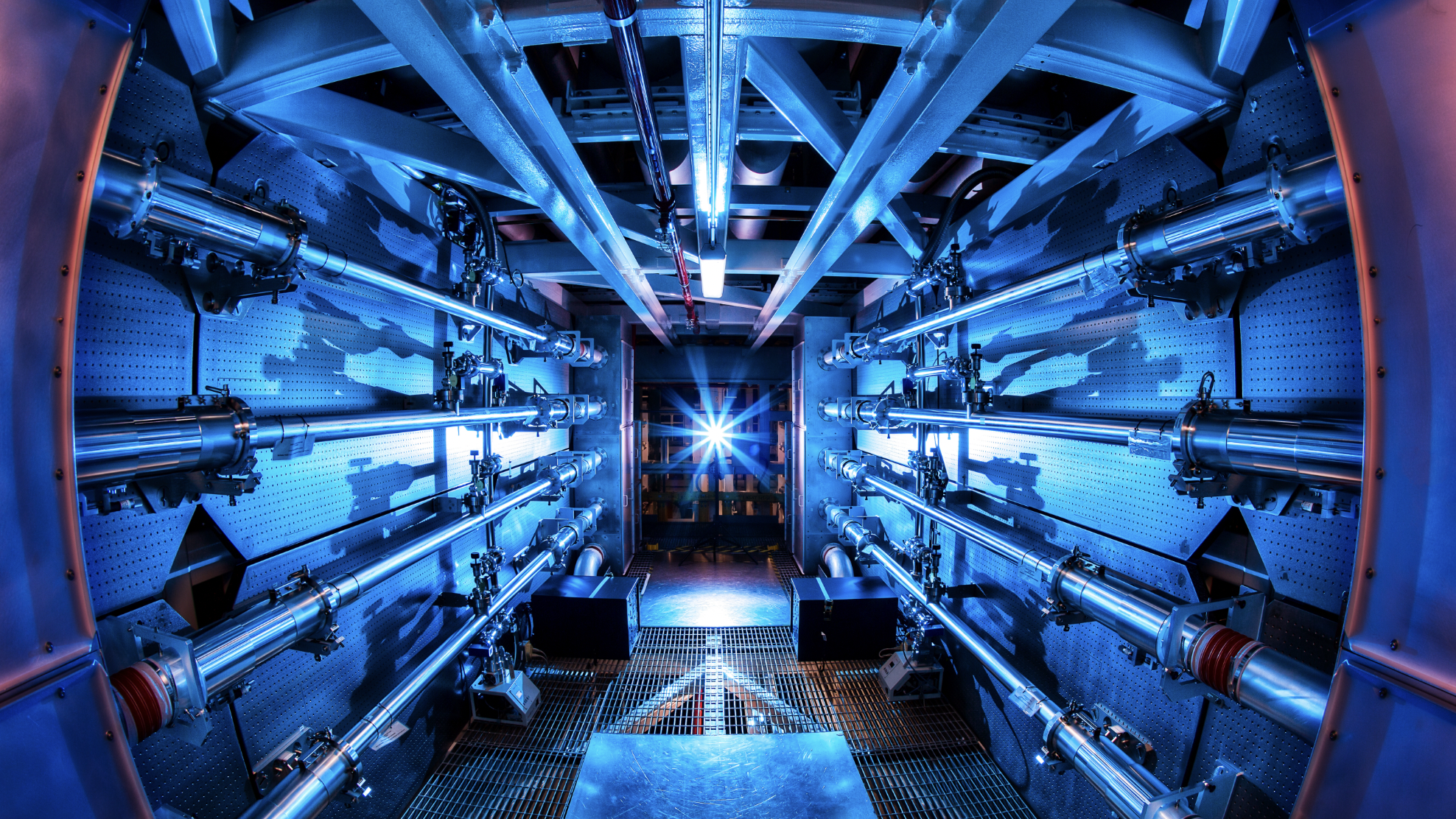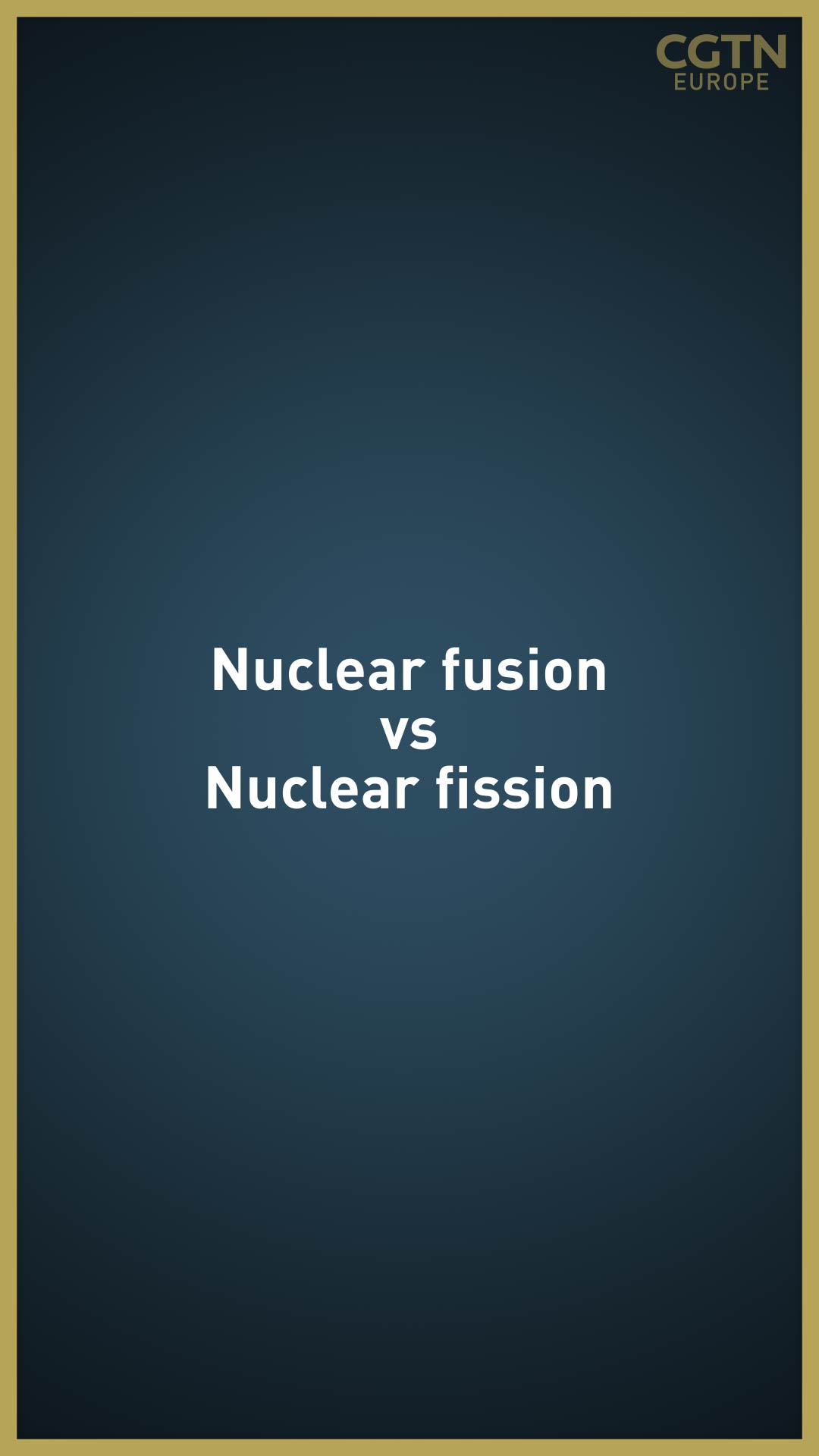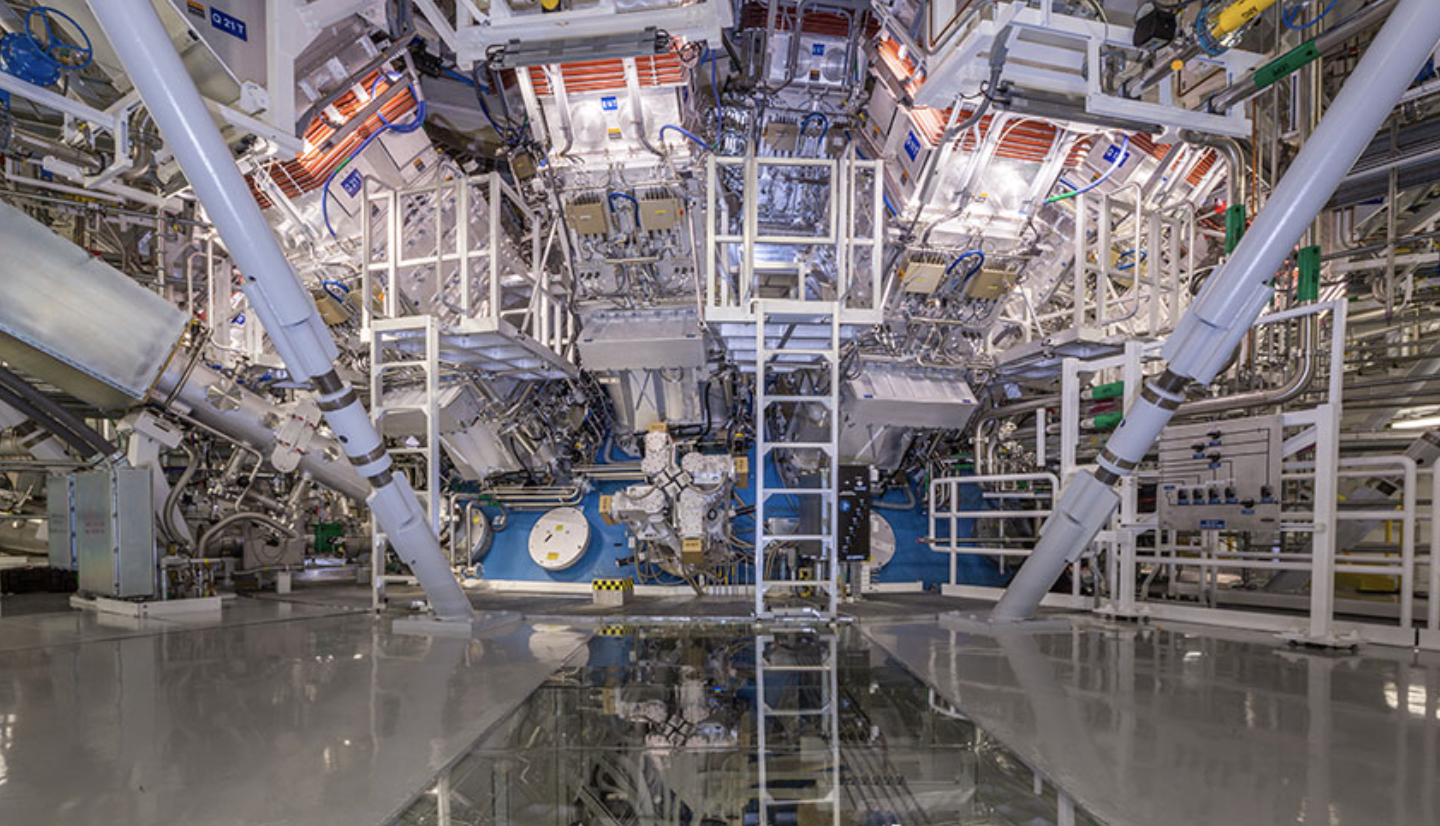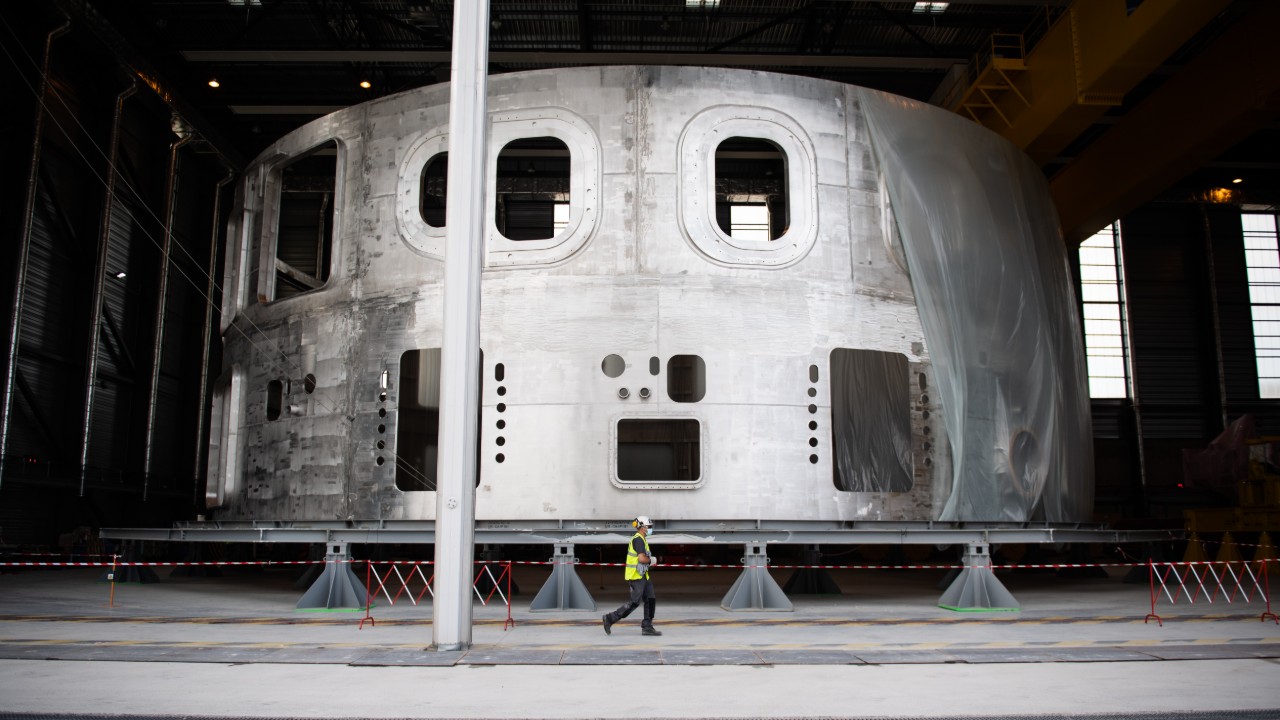
Inside the National Ignition Facility preamplifier support structure at the Lawrence Livermore National Laboratory. Damien Jemison / LLNL
Inside the National Ignition Facility preamplifier support structure at the Lawrence Livermore National Laboratory. Damien Jemison / LLNL
An ambition for decades to achieve net energy gain from a fusion reaction has been carried out by U.S. scientists.
The U.S. Department of Energy said on Sunday it would announce a "major scientific breakthrough" this week, after reports a federal laboratory had recently achieved a major milestone in nuclear fusion research.
The Financial Times reported that scientists in the California-based Lawrence Livermore National Laboratory (LLNL) had achieved a "net energy gain" from an experimental fusion reactor.
That would represent the first time that researchers have successfully produced more energy in a fusion reaction - the same type that powers the Sun - than was consumed during the process, a potentially major step in the pursuit of zero-carbon power.
Nuclear fusion is considered by some scientists to be a potential energy of the future, particularly as it produces little waste and no greenhouse gases.
00:38

How nuclear power works (or doesn't)
There are two types of nuclear power: fission and fusion. In fission, the nucleus of an atom splits into two or more smaller nuclei; in fusion, two or more nuclei combine. Each reaction releases energy, which can be harnessed for destruction – the bombs dropped on Japan in 1945 were fission, but fusion was behind the second-generation "H-bomb" and can generate vast amounts of power.
Or so goes the theory. Eager scientists have pursued the harnessing of nuclear fusion's power-generating capacity for almost three-quarters of a century –the UK Atomic Energy Authority patented a fusion reactor in 1946 – but without reliable success. There are several theoretical methods to attain fusion, but the one most exciting the modern scientific community is thermonuclear fusion.
"Thermo" here simply means heat, because that method relies on achieving fusion via extremely high temperatures. That’s what happens in the Sun's core, where hydrogen atoms fuse to produce helium and energy. But forcing two nuclei together is difficult because they're both positively charged, so they strongly repel one another.
Overcoming that innate repulsion happens in the Sun's core because it is under immense pressure of gravity as well as heat – around 15 million degrees Celsius and 265 billion bar of pressure. On Earth atmospheric pressure is roughly 1 bar, the interior of a fusion reactor will need to reach 150 million degrees Celsius – 10 times hotter than the Sun's core.
That's the scale of the task scientists are tackling – as well as keeping the whole thing under tight control. Humankind has already witnessed the power of thermonuclear bombs, which produce effectively an uncontrolled release of fusion energy. Harnessing, rather than unleashing, that inherent power will require self-sustaining, controlled "break-even" fusion.
What are the pros and cons of nuclear fusion?
In 2019, National Geographic described nuclear fusion as the "holy grail for the future of nuclear power." Not only would it produce more energy more safely, it would also produce far less harmful radioactive waste than fission, from which weapons-grade material in spent fuel rods taking millions of years to decay requires extremely careful and expensive storage. (Furthermore, most fusion reactors emit less radiation than the background emissions in the natural world.)
At the other end of the process, fusion requires much less fuel than fission and the fuel is much easier to obtain. Fission requires uranium, a rare substance that must be mined and enriched; fusion requires deuterium, readily extractable from seawater, and tritium – which can be made in the reactor itself from lithium.
Lithium is much more easily available than uranium, including from salt flats; the International Thermonuclear Experimental Reactor (ITER) has estimated that "terrestrial reserves of lithium would permit the operation of fusion power plants for more than 1,000 years, while sea-based reserves of lithium would fulfil needs for millions of years."

NIF's 192 laser beams converge at the center of this giant sphere. Damien Jemison / LLNL
NIF's 192 laser beams converge at the center of this giant sphere. Damien Jemison / LLNL
Lithium's increased usage over the past few years to produce raw material for electric batteries has raised concerns about the effects of large-scale mining. That said, the quantities of lithium required by nuclear fusion power stations would be relatively small and would of course lead to the production of more energy.
And unlike fossil-fuel power generators, fusion reactors don't emit toxins such as carbon dioxide or other greenhouse gases. The main byproduct is helium; the inert, non-toxic gas has several uses in industry, which has suffered several shortages in recent years.
One huge worry with nuclear fission is the capacity for a meltdown, as at Chernobyl or Fukushima. However, that type of uncontrolled chain reaction simply doesn't happen with nuclear fusion. "It is absolutely impossible for a Fukushima-type accident to happen at ITER," an official documentation insisted. "The reaction relies on a continuous input of fuel; if there is any perturbation in this process, the reaction ceases immediately."
The disadvantage of nuclear fusion is obvious: it's horrendously difficult to achieve while nuclear fission power plants have been online since the 1950s.
Previously hopes for a breakthrough
In October 2019, then UK Prime Minister Boris Johnson enthused that scientists "are on the verge of creating commercially viable miniature fusion reactors for sale around the world." He soon admitted he may have overstated the imminence – "I know they have been on the verge for some time… It is a pretty spacious kind of verge… we are on the verge of the verge."
Cynics would say fusion has been on the verge of the verge for decades, not helped by occasional claims of success, which have subsequently been debunked. Even ITER isn't making brash promises beyond an attempt to produce plasma by 2025: its official site says ITER "will contribute to the design of the next-generation machine – DEMO – that will bring fusion research to the threshold of a prototype fusion reactor."
I'm convinced that not only is fusion important: it's also going to happen. When ITER works – and I say when, not if – it will be a step change
- Ian Chapman, CEO, UK Atomic Energy Authority
Even so, there is certainly confidence in the atomic industry – not least from Ian Chapman, CEO of the UK Atomic Energy Authority. "I came to fusion because I passionately believe that it is needed – that it can change the world," he said.
"I'm convinced that not only is fusion important: it's going to happen. When ITER works – and I say when, not if – it will be a step change for fusion and you will see massive investment come into the field.
"What we are doing is fundamentally pushing the barriers of what's known in the technology world. And of course you reach hurdles and you have to overcome them, which we do all the time – and ITER will happen, I am completely convinced of it."
What are the potential applications of nuclear fusion?
Although nuclear power is not officially renewable energy because it relies on the mining of finite materials, fusion releases four million times more energy than a chemical reaction like burning fossil fuels, and four times as much as fission.
According to ITER, "Fusion has the potential to provide the kind of baseload energy needed to provide electricity to our cities and our industries" – and its primary application is likely to be supplying national grids with low-cost, low-waste electricity.
The World Economic Forum has calculated that a gallon of seawater could produce as much energy as 300 gallons of petrol. However, the likelihood of your car whizzing along with a fusion reactor under the hood seems very distant at the moment.

A technician walks past the lower cyclinder of the cryostat, part of the tokamak at the International Thermonuclear Experimental Reactor (ITER) in Provence, France. /Clement Mahoudeau/AFP
A technician walks past the lower cyclinder of the cryostat, part of the tokamak at the International Thermonuclear Experimental Reactor (ITER) in Provence, France. /Clement Mahoudeau/AFP
That said, there are those who are seeking to use fusion for transport. NASA has been investigating the development of small-scale fusion reactors for powering deep-space rockets, fueled by the bountiful supply of hydrogen, the universe's most abundant element.
Meanwhile, back down on Earth – or rather the underwater majority of it – the U.S. Navy has filed a patent for a "plasma compression fusion device" using magnetic fields to create "accelerated vibration and/or accelerated spin."
Those applications may be decades off and sound more like science fiction than fact – but scientific research is often propelled forward by the involvement of heavily-funded organizations like the military. Once we have fusion reactors it's hardly fanciful to suggest that the usual market forces of device miniaturization may follow. You may yet get that nuclear-powered car.

